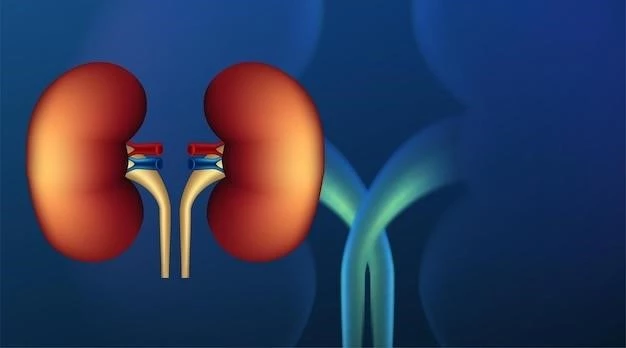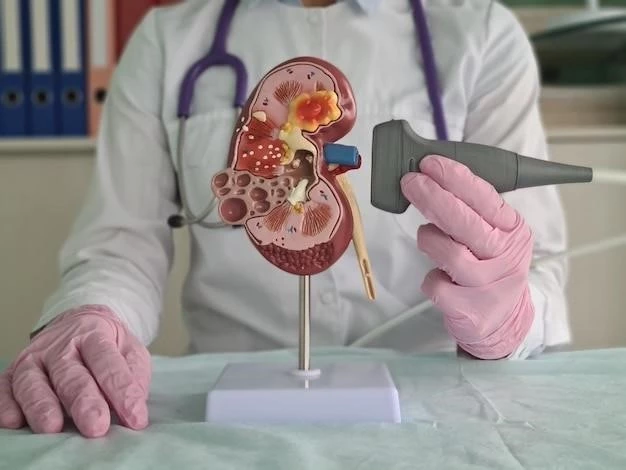Introduction to Renal Agenesis, Meningomyelocele, and Müllerian Defect
Introduction․ During development, mutual induction between the Wolffian and Müllerian ducts leads to formation of renal and Müllerian structures․
Overview and Relationship Between Renal and Müllerian Anomalies
During development, mutual induction between the Wolffian (mesonephric) and Müllerian (paramesoephric) ducts leads to the formation of renal and Müllerian structures․ The relationship between Müllerian and renal anomalies has long been recognized․ Müllerian anomalies are found in an estimated 0․1-4 of the female population, often presenting unique combinations of ectodermal and mesodermal developmental defects․ Studies highlight the association between renal agenesis, meningomyelocele, and absence of Müllerian structures, emphasizing the importance of understanding these anomalies and their interplay․

Renal Agenesis⁚ Understanding the Condition
Renal agenesis is a condition where one or both kidneys fail to form properly during fetal development․ Unilateral renal agenesis refers to the absence of one kidney, while bilateral renal agenesis means neither kidney forms․ Renal aplasia is the failure of the kidney to develop beyond its primitive form․ The condition often presents as a sporadic and isolated abnormality․
Definition and Types of Renal Agenesis
Renal agenesis is a condition where one or both kidneys fail to form properly during fetal development․ Unilateral renal agenesis refers to the absence of one kidney, while bilateral renal agenesis means neither kidney forms․ Renal aplasia is the failure of the kidney to develop beyond its primitive form․ The condition often presents as a sporadic and isolated abnormality․
Causes and Developmental Pathways
Renal agenesis can result from disruptions in early fetal development, impacting the formation of one or both kidneys․ Mutual induction between the Wolffian and Müllerian ducts during embryogenesis plays a critical role in renal and Müllerian structures’ development․ Genetic factors, environmental influences, and chromosomal defects may contribute to the occurrence of renal agenesis, highlighting the complexity of these developmental pathways․
Meningomyelocele⁚ An Insight into the Condition
Meningomyelocele is a type of spina bifida in which the spinal canal and backbone do not close before birth, leading to the protrusion of the spinal cord and its coverings through an opening in the backbone․ This condition can result in nerve damage, paralysis, and other complications․
Description and Manifestations of Meningomyelocele
Meningomyelocele, a type of spina bifida, occurs when the spinal canal and backbone do not close properly before birth, leading to the protrusion of the spinal cord․ This condition can result in nerve damage, paralysis, and other complications, affecting the individual’s mobility and overall health․
Association with Renal Agenesis and Müllerian Defect
Meningomyelocele, often associated with renal agenesis and Müllerian defects, demonstrates a unique combination of developmental abnormalities affecting the spinal cord, kidneys, and female reproductive structures․ Understanding these interconnections is crucial for comprehensive management of individuals affected by these complex conditions․
Müllerian defects are a group of conditions affecting the development of female reproductive structures like the uterus and fallopian tubes․ These anomalies often coincide with renal agenesis and other congenital abnormalities, highlighting complex interrelations in embryonic development․
Müllerian Duct Anomalies and Classification
Müllerian duct anomalies encompass a spectrum of conditions affecting the development of female reproductive structures, such as the uterus and fallopian tubes․ These anomalies are often classified based on their clinical manifestations, prognosis, and treatment options, highlighting the complexity of these abnormalities and the need for accurate diagnosis and tailored management strategies․
Müllerian Defects⁚ A Detailed Examination
Müllerian defects encompass a spectrum of conditions affecting the development of female reproductive structures like the uterus and fallopian tubes․ These anomalies often coincide with renal agenesis and other congenital abnormalities, highlighting complex interrelations in embryonic development․
Individuals with Müllerian defects associated with renal agenesis may experience a range of presentations, highlighting the need for comprehensive assessment and tailored management strategies to address potential complications․
Individuals with Müllerian defects associated with renal agenesis may experience a range of presentations, highlighting the need for comprehensive assessment and tailored management strategies to address potential complications․

Clinical Presentations and Complications
Individuals with Müllerian defects associated with renal agenesis may experience a range of presentations, highlighting the need for comprehensive assessment and tailored management strategies to address potential complications․
Evaluating Müllerian defects associated with renal agenesis through MRI provides crucial insights for accurate diagnosis and tailored management strategies to address potential complications․
Evaluating Müllerian defects associated with renal agenesis through MRI provides crucial insights for accurate diagnosis and tailored management strategies to address potential complications․
Diagnostic Approaches and Imaging Studies
Evaluating MDAs associated with renal agenesis through MRI provides essential insights for accurate diagnosis and individualized management, crucial for addressing potential complications effectively․
Medical interventions and surgical options play a vital role in the management of individuals with renal agenesis, meningomyelocele, and Müllerian defects, ensuring long-term prognosis and follow-up care․
Medical interventions and surgical options are pivotal in managing individuals with renal agenesis, meningomyelocele, and Müllerian defects, promoting long-term prognosis and comprehensive follow-up care․
Treatment Strategies and Prognosis
Medical interventions and surgical options are crucial in managing individuals with renal agenesis, meningomyelocele, and Müllerian defects․ These interventions play a significant role in the long-term prognosis and follow-up care, ensuring optimal health outcomes and quality of life for affected individuals․
Studies have shown an association between renal agenesis, meningomyelocele, and Müllerian defects, highlighting complex developmental interrelations and the importance of comprehensive management strategies․
Studies have shown an association between renal agenesis, meningomyelocele, and Müllerian defects, emphasizing the need for comprehensive management strategies to address these multi-faceted conditions effectively․
Research Studies and Findings
Insights from clinical reports and genetic studies have shed light on the complex interplay between renal agenesis, meningomyelocele, and Müllerian defects, emphasizing the need for further research to enhance understanding and management of these interconnected conditions․
